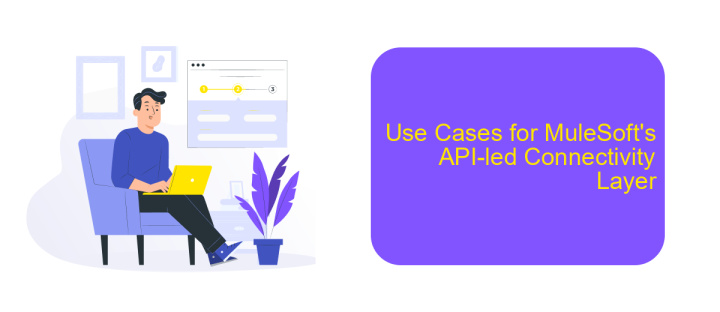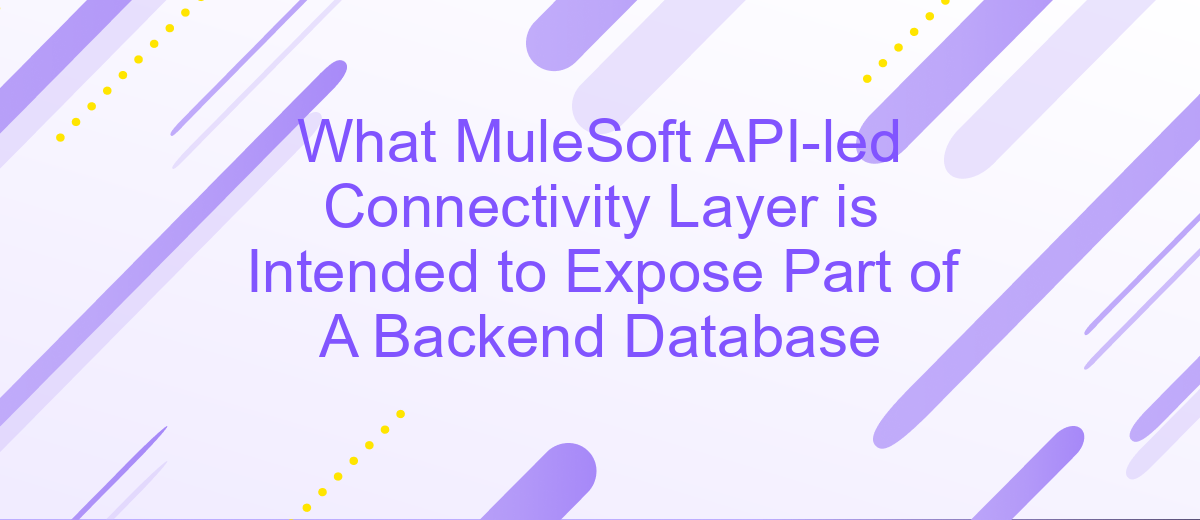What MuleSoft API-led Connectivity Layer is Intended to Expose Part of A Backend Database
The MuleSoft API-led connectivity layer is designed to streamline and enhance the integration of backend databases with various applications and systems. By exposing specific parts of a backend database, this approach facilitates seamless data access, improves operational efficiency, and supports agile development practices. This article delves into the core functionalities and benefits of leveraging MuleSoft for API-led connectivity in modern IT environments.
What is an API-Led Connectivity Layer?
An API-led connectivity layer is a strategic approach to connecting and exposing data through APIs, which enables seamless integration across various systems and applications. This methodology focuses on creating reusable and purposeful APIs that serve different roles within an organization’s architecture, ensuring efficient data flow and interaction.
- System APIs: These APIs provide direct access to core systems and data sources, such as databases and ERP systems.
- Process APIs: They orchestrate and shape data from multiple sources, facilitating business processes and workflows.
- Experience APIs: These APIs are designed to deliver data to end-user applications, ensuring a consistent and optimized user experience.
By leveraging an API-led connectivity layer, businesses can streamline integration processes and enhance agility. Tools like ApiX-Drive further simplify this approach by offering pre-built connectors and automated workflows, making it easier to integrate various services and applications without extensive coding. This results in faster deployment, reduced costs, and a more adaptable IT infrastructure.
How MuleSoft's API-led Connectivity Layer Works

MuleSoft's API-led connectivity layer operates by structuring APIs into three distinct layers: Experience, Process, and System. The Experience layer is responsible for interacting with end-user applications, providing a tailored API for each specific use case. The Process layer handles the orchestration and business logic, integrating and transforming data between systems. Lastly, the System layer directly connects to backend systems, databases, and other services, exposing their functionalities as reusable APIs.
To facilitate seamless integration, services like ApiX-Drive can be employed. ApiX-Drive simplifies the configuration of integrations by offering an intuitive interface and pre-built connectors for various applications and databases. By leveraging such services, MuleSoft's API-led connectivity layer can be efficiently set up to expose parts of a backend database, ensuring data is accessible and manageable across different platforms. This structured approach not only enhances agility but also promotes reusability and scalability within the IT infrastructure.
Benefits of Using MuleSoft's API-led Connectivity Layer

MuleSoft's API-led Connectivity Layer offers a structured approach to integrating and exposing backend databases, providing numerous benefits for businesses. By leveraging this layer, organizations can enhance their data accessibility and streamline operations.
- Increased Agility: MuleSoft allows for rapid development and deployment of APIs, enabling businesses to quickly respond to changing market demands.
- Scalability: The API-led approach supports scalable integrations, making it easier to manage growing data volumes and user requests.
- Enhanced Security: MuleSoft provides robust security features, ensuring that data is protected during transmission and access is controlled.
- Seamless Integration: With tools like ApiX-Drive, businesses can effortlessly connect various applications and services, facilitating smooth data flow and reducing manual intervention.
- Cost Efficiency: By reducing the complexity of integrations and automating processes, MuleSoft helps lower operational costs.
Overall, MuleSoft's API-led Connectivity Layer empowers businesses to create more flexible, secure, and efficient integration solutions. This approach not only enhances operational performance but also supports long-term growth by enabling seamless connectivity across diverse systems.
Use Cases for MuleSoft's API-led Connectivity Layer

MuleSoft's API-led connectivity layer is designed to streamline the process of integrating various backend systems, databases, and applications. By leveraging this approach, businesses can create reusable APIs that simplify data access and improve overall system efficiency. This method is particularly useful for companies looking to modernize their IT infrastructure without extensive redevelopment.
One of the primary use cases for MuleSoft's API-led connectivity layer is enabling seamless data integration between disparate systems. This can be especially beneficial for organizations that have accumulated a variety of legacy systems over the years. The layer acts as a bridge, allowing these systems to communicate and share data effectively.
- Real-time data synchronization between CRM and ERP systems.
- Connecting e-commerce platforms with inventory management systems.
- Integrating third-party services like ApiX-Drive for automated workflows.
- Facilitating mobile app development by providing easy access to backend data.
By utilizing MuleSoft's API-led connectivity layer, businesses can achieve greater agility and responsiveness. This approach not only reduces the complexity of integration projects but also ensures that data is readily available across all systems, enhancing decision-making and operational efficiency.
Conclusion
In conclusion, MuleSoft API-led Connectivity Layer serves as a crucial bridge, enabling seamless exposure of backend databases to various front-end applications. By leveraging this architecture, organizations can ensure that their data is accessible, secure, and efficiently managed. This approach streamlines the integration process, reduces redundancy, and enhances the overall performance of the system.
Moreover, the use of services like ApiX-Drive can further simplify the integration setup. ApiX-Drive offers robust tools and functionalities that facilitate the connection of diverse applications and databases, ensuring smooth data flow and real-time synchronization. By integrating MuleSoft's capabilities with ApiX-Drive, businesses can achieve a comprehensive, scalable, and efficient integration solution, ultimately driving better decision-making and operational efficiency.
- Automate the work of an online store or landing
- Empower through integration
- Don't spend money on programmers and integrators
- Save time by automating routine tasks
FAQ
What is the purpose of the System API layer in MuleSoft's API-led connectivity approach?
How does the Process API layer differ from the System API layer?
What role does the Experience API layer play in API-led connectivity?
Can MuleSoft's API-led connectivity approach integrate with third-party automation and integration tools?
What are the benefits of using the API-led connectivity approach for exposing backend databases?
Apix-Drive is a simple and efficient system connector that will help you automate routine tasks and optimize business processes. You can save time and money, direct these resources to more important purposes. Test ApiX-Drive and make sure that this tool will relieve your employees and after 5 minutes of settings your business will start working faster.


